Abstract
When light is diffracted by a single frog muscle fiber the intensities I kappa of the different orders kappa (kappa = 1,2,3) strongly depend on the angle between the axis of the incident beam and the fiber axis. Maximum intensity is not obtained with perpendicular incidence (omega = 0 degree) but at angles that can be calculated for each order number and sarcomere length using Bragg's formula. In analogy to techniques developed for x-ray structure analysis of mosaic crystals we have rotated the fiber around an axis perpendicular to the fiber axis and to the incident beam axis within an angular range delta omega = +/- 35 degrees and recorded the light intensities I kappa. Diffraction efficiencies defined as E kappa = integral of I kappa d omega were studied as a function of sarcomere length and during isometric contraction. The sarcomere length dependences of the efficiencies E kappa of the first three orders show characteristic trends. E1 increases with fiber stretch, E2 has a minimum at a sarcomere length near 2.8 micrometers, and E3 has a maximum near 2.5 micrometers. These trends as well as the observed efficiency ratios are in fairly good agreement with predictions by the intensity formula developed for x-ray structure analysis. During isometric contraction, the diffraction efficiencies of the fiber decrease, with the decreases becoming greater the higher the order number. These decreases might be caused by a longitudinal displacement of myofibrils of up to 0.4 micrometers. The efficiency of light diffraction strongly depends on the tonicity of the bathing fluid. Hypertonic (3/2 x normal) solution reduces E1 to less than half, hypotonic (2/3 x normal) solution increases E1 to almost twice the value obtained in normal Ringer's solution.
Full text
PDF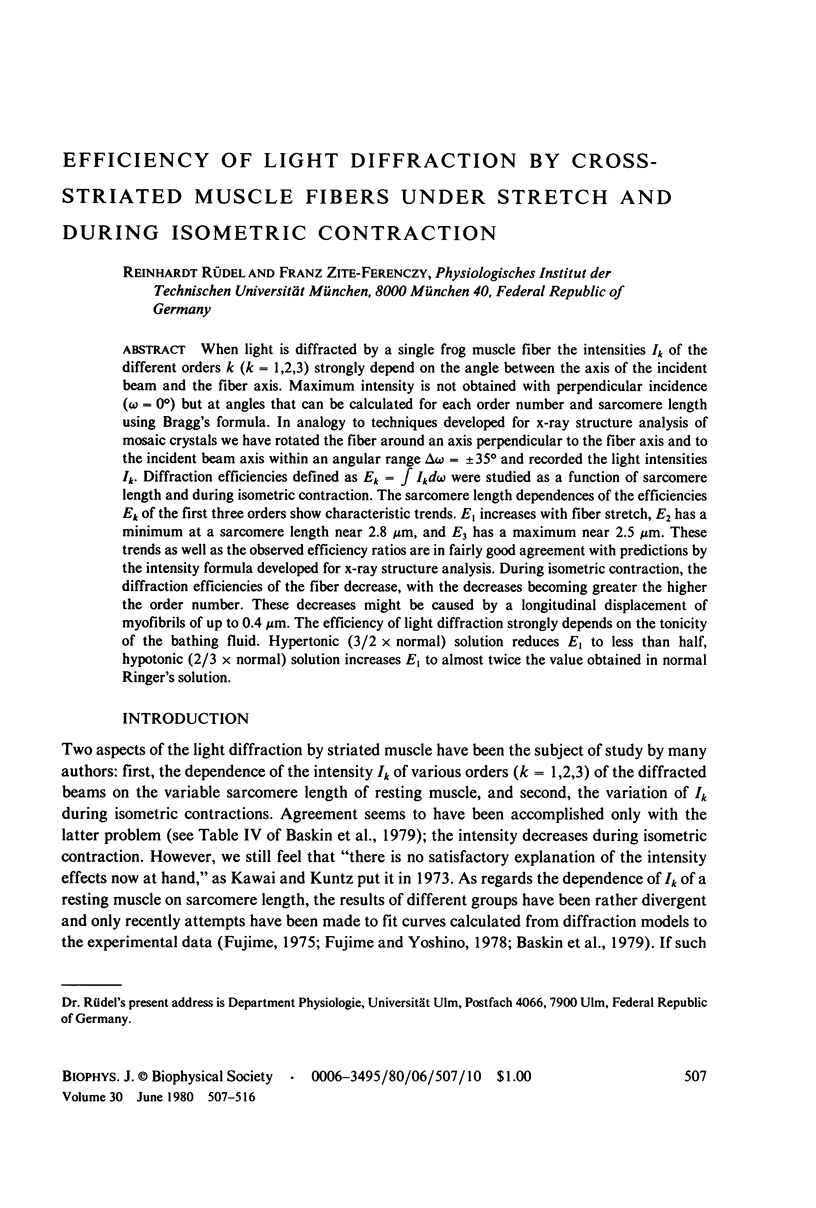
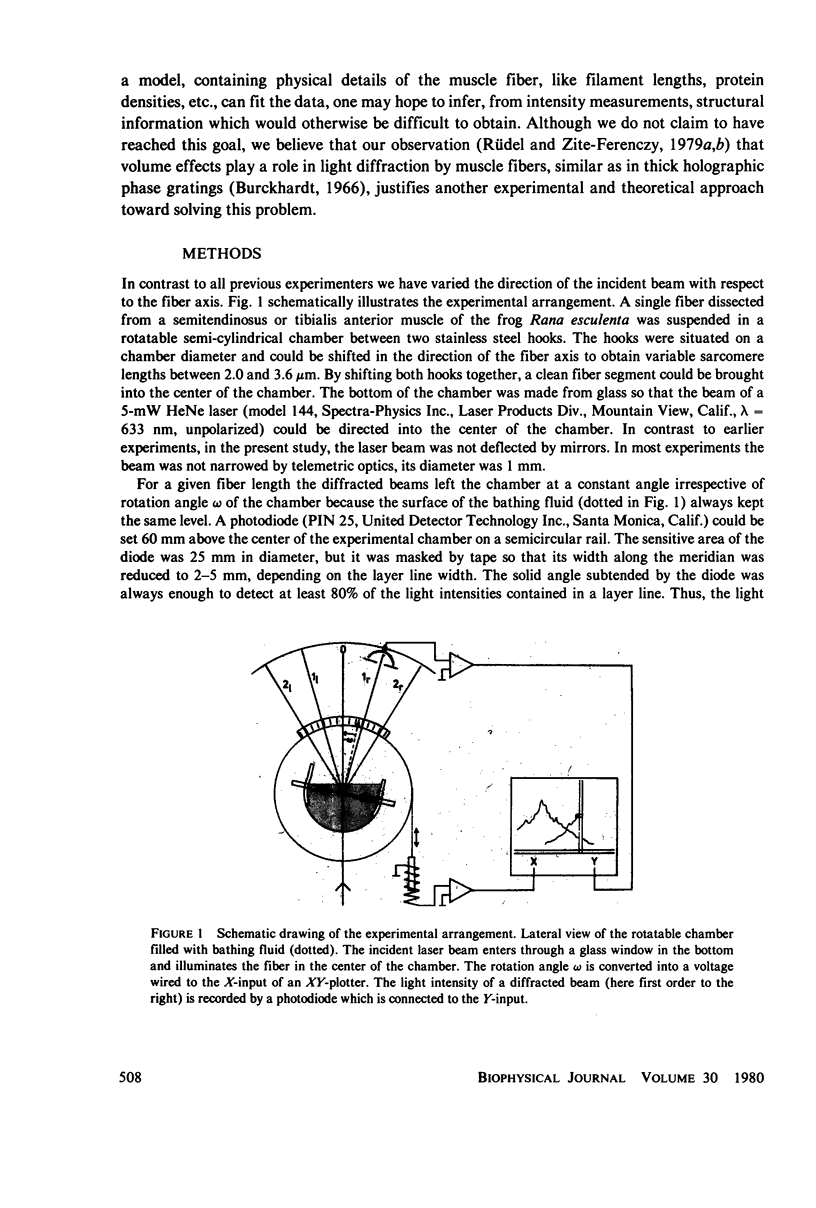
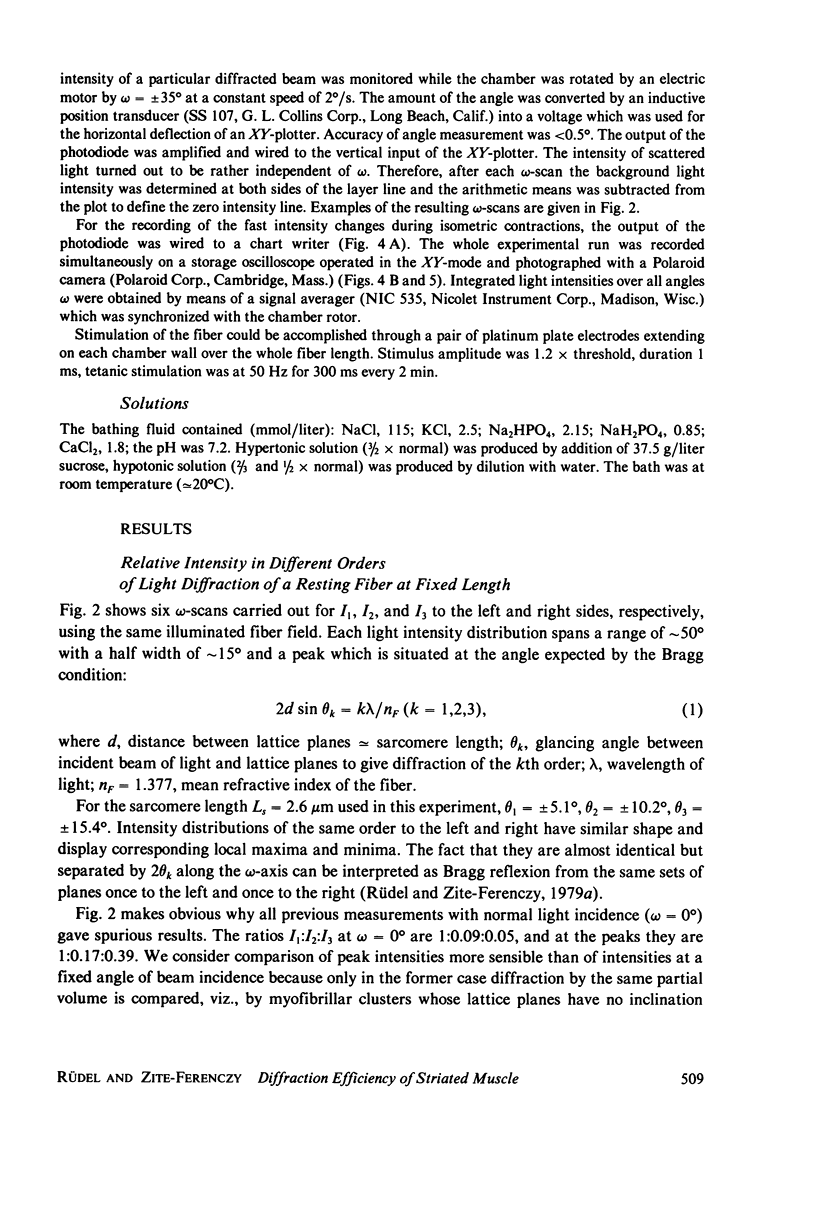
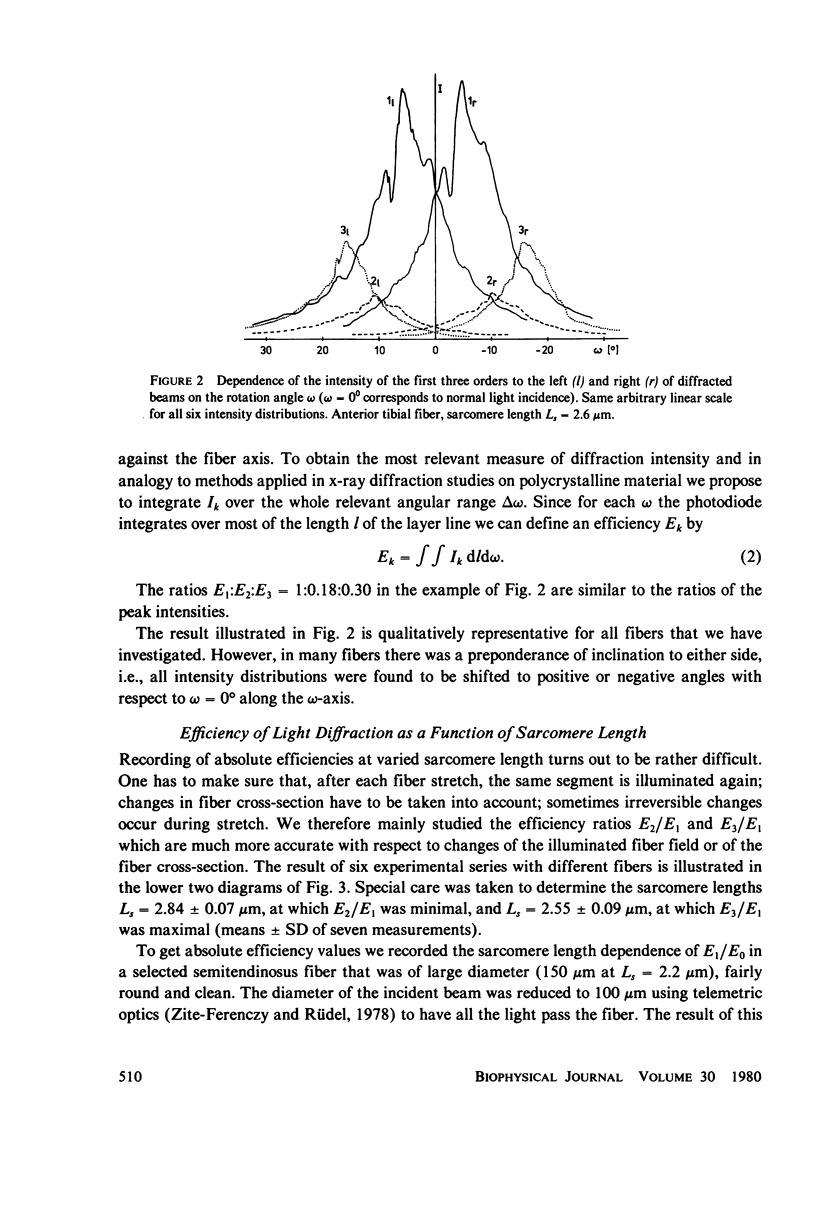
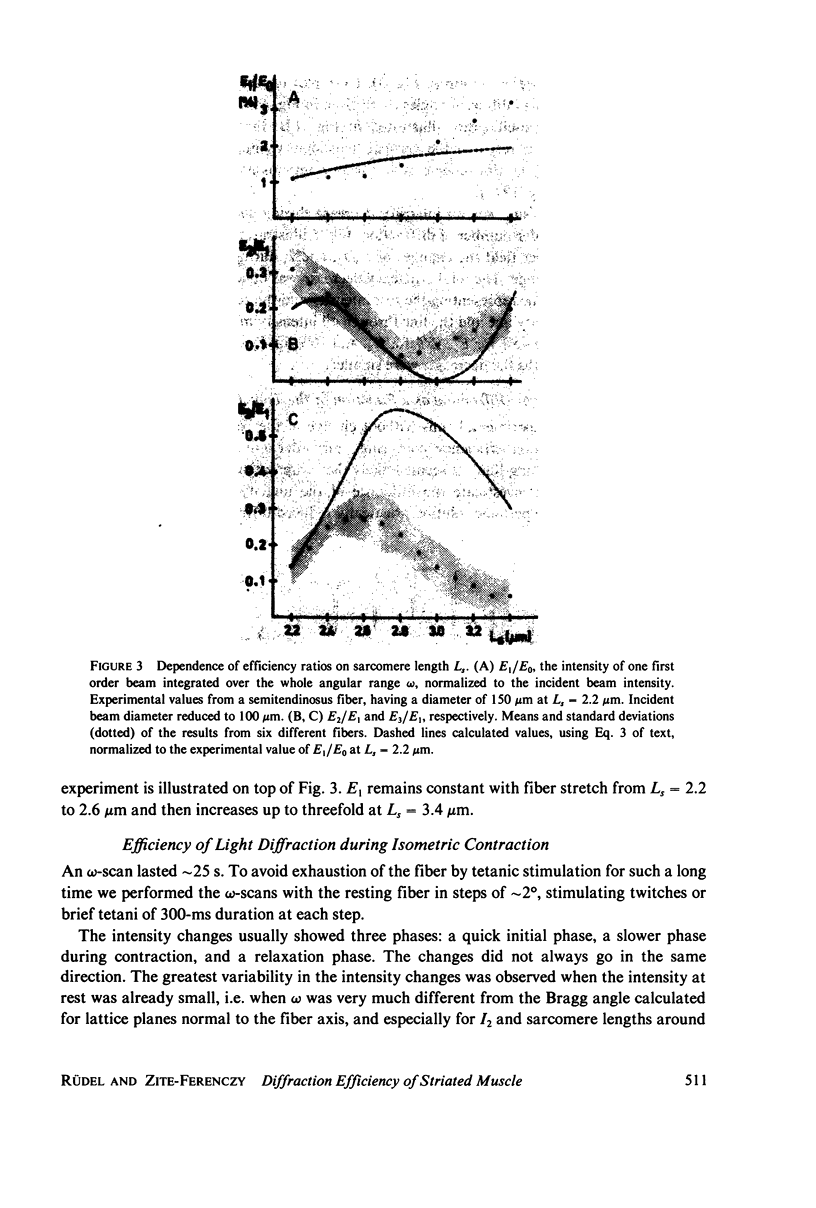
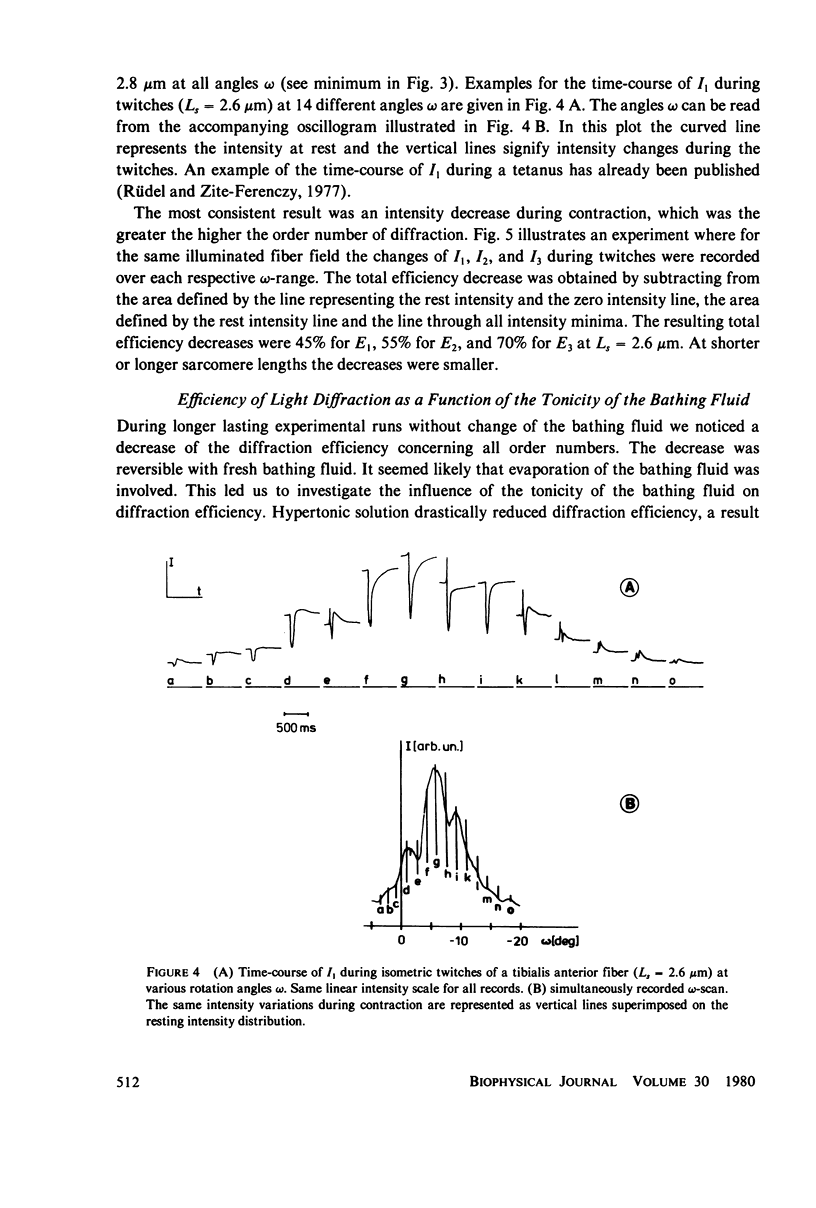
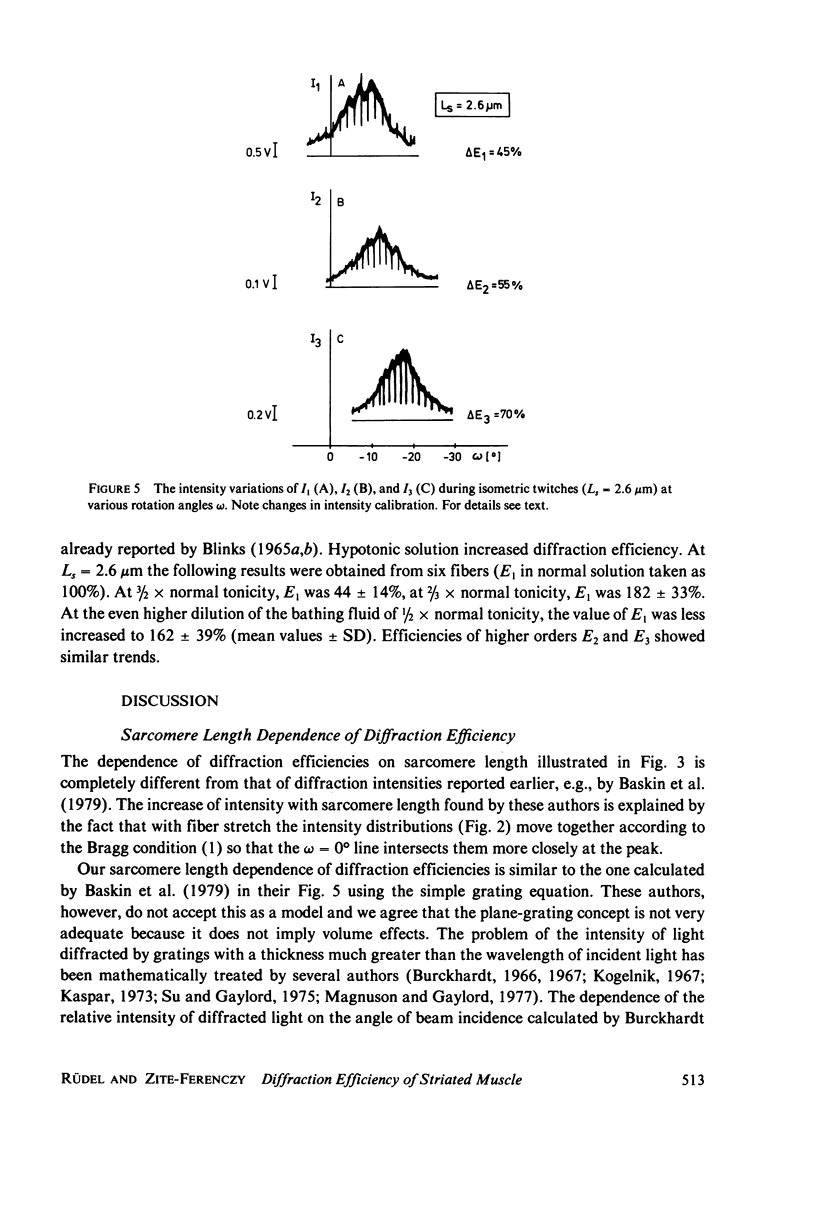
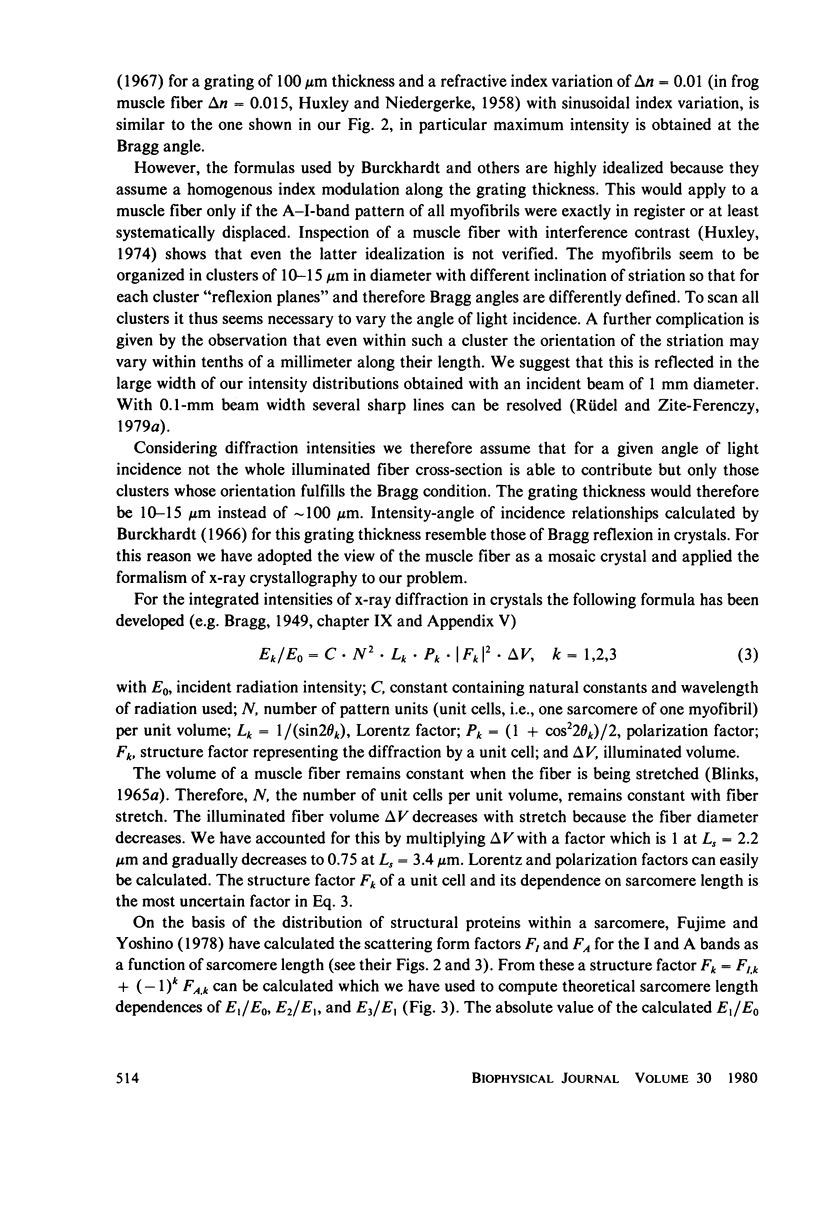
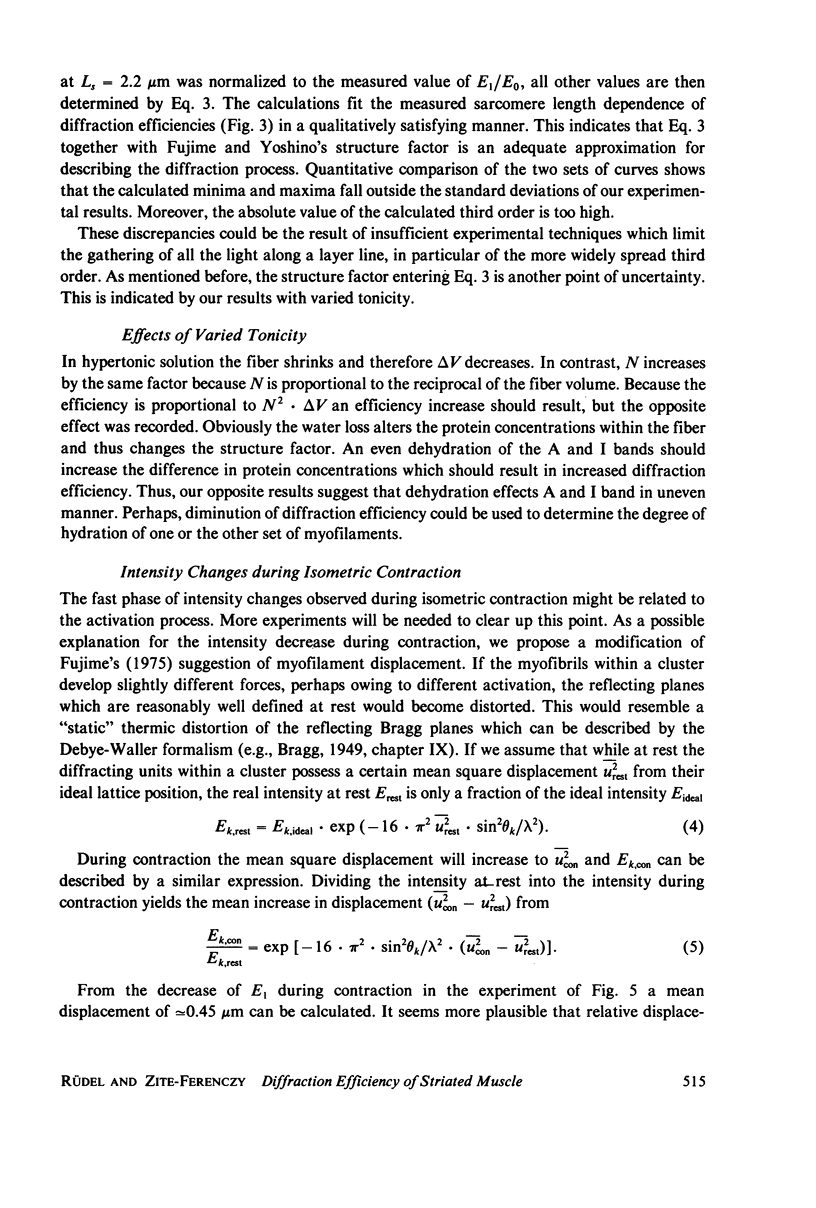
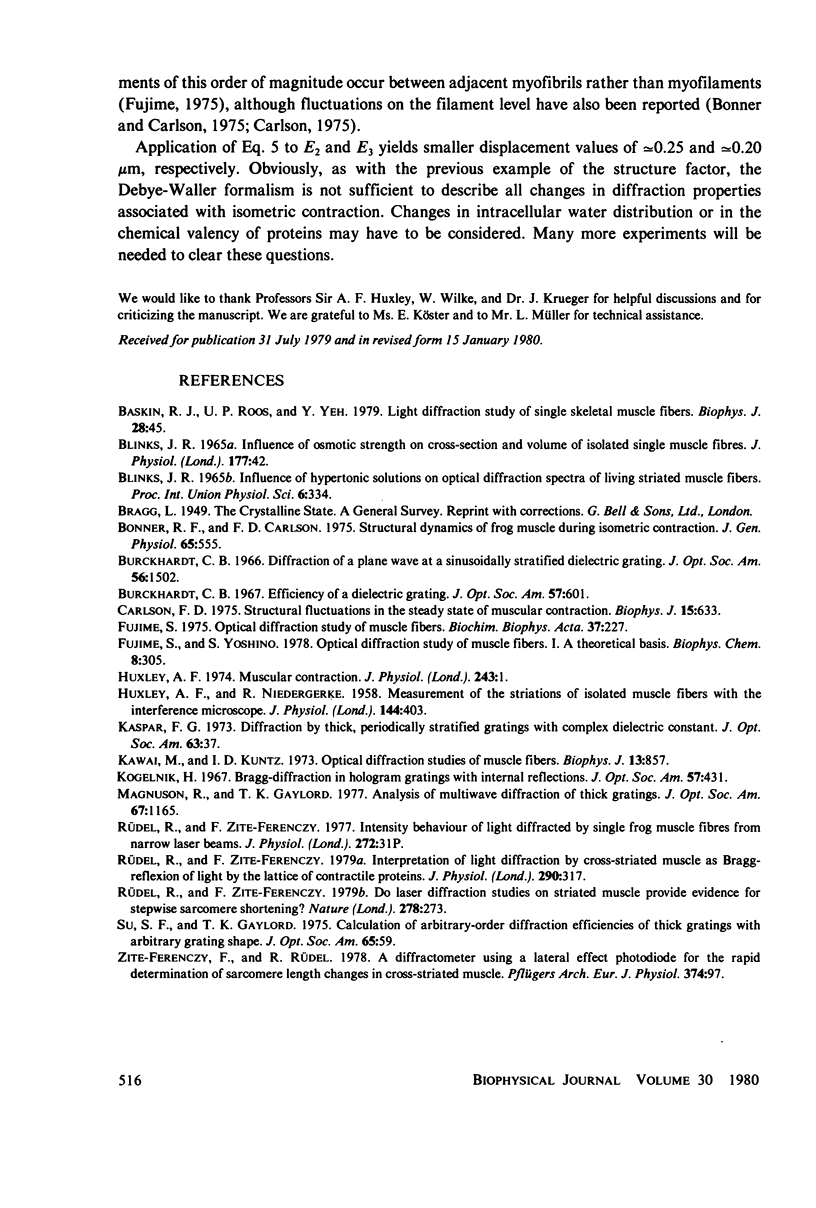
Selected References
These references are in PubMed. This may not be the complete list of references from this article.
- Baskin R. J., Roos K. P., Yeh Y. Light diffraction study of single skeletal muscle fibres. Biophys J. 1979 Oct;28(1):45–64. doi: 10.1016/S0006-3495(79)85158-9. [DOI] [PMC free article] [PubMed] [Google Scholar]
- Bonner R. F., Carlson F. D. Structural dynamics of frog muscle during isometric contraction. J Gen Physiol. 1975 May;65(5):555–581. doi: 10.1085/jgp.65.5.555. [DOI] [PMC free article] [PubMed] [Google Scholar]
- Carlson F. D. Structural fluctuations in the steady state of muscular contraction. Biophys J. 1975 Jul;15(7):633–649. doi: 10.1016/S0006-3495(75)85845-0. [DOI] [PMC free article] [PubMed] [Google Scholar]
- Fujime S. Optical diffraction study of muscle fibers. Biochim Biophys Acta. 1975 Jan 30;379(1):227–238. doi: 10.1016/0005-2795(75)90026-4. [DOI] [PubMed] [Google Scholar]
- Fujime S., Yoshino S. Optical diffraction study of muscle fibers. I. A theoretical basis. Biophys Chem. 1978 Sep;8(4):305–315. doi: 10.1016/0301-4622(78)80013-1. [DOI] [PubMed] [Google Scholar]
- HUXLEY A. F., NIEDERGERKE R. Measurement of the striations of isolated muscle fibres with the interference microscope. J Physiol. 1958 Dec 30;144(3):403–425. doi: 10.1113/jphysiol.1958.sp006110. [DOI] [PMC free article] [PubMed] [Google Scholar]
- Kawai M., Kuntz I. D. Optical diffraction studies of muscle fibers. Biophys J. 1973 Sep;13(9):857–876. doi: 10.1016/S0006-3495(73)86031-X. [DOI] [PMC free article] [PubMed] [Google Scholar]
- Rüdel R., Zite-Ferenczy F. Interpretation of light diffraction by cross-striated muscle as Bragg reflexion of light by the lattice of contractile proteins. J Physiol. 1979 May;290(2):317–330. doi: 10.1113/jphysiol.1979.sp012773. [DOI] [PMC free article] [PubMed] [Google Scholar]
- Zite-Ferenczy F., Rüdel R. A diffractometer using a lateral effect photodiode for the rapid determination of sarcomere length changes in cross-striated muscle. Pflugers Arch. 1978 Apr 25;374(1):97–100. doi: 10.1007/BF00585702. [DOI] [PubMed] [Google Scholar]


